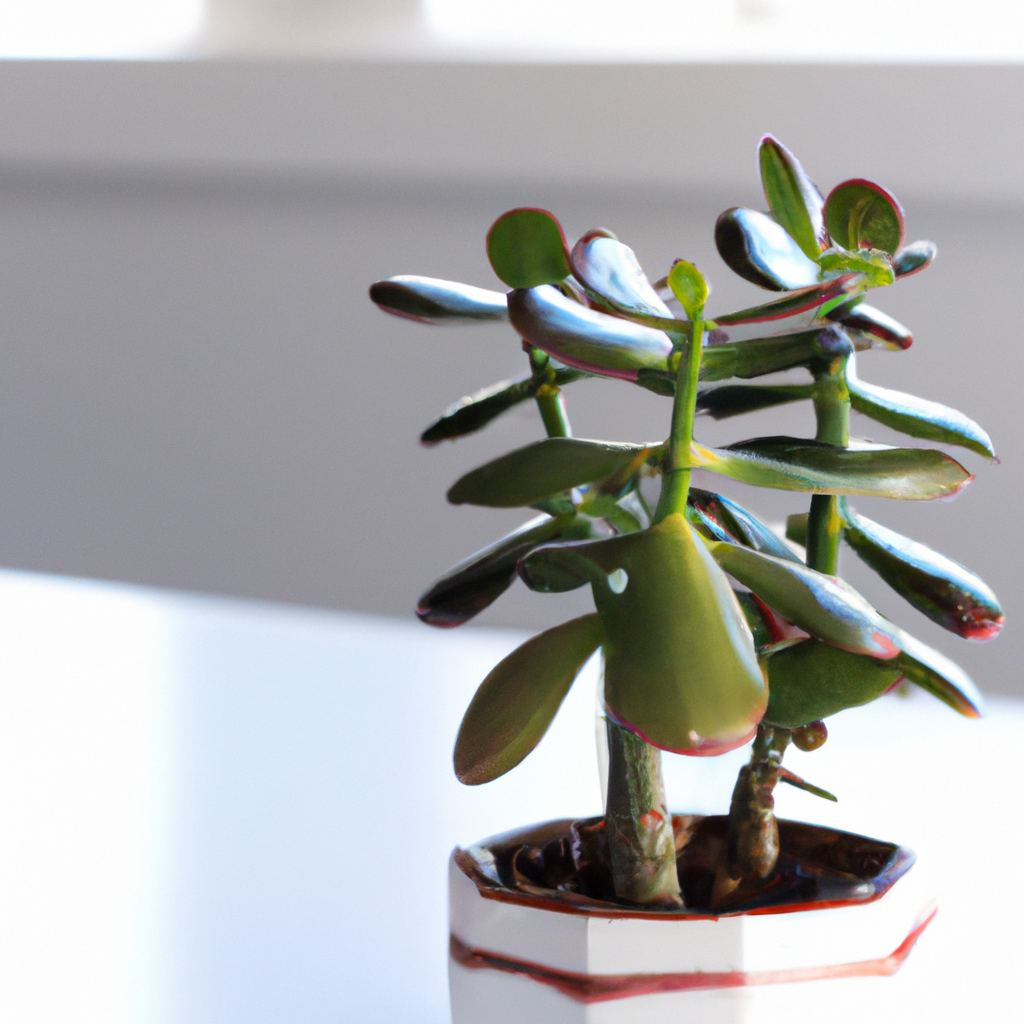When deciding if a houseplant is the right fit for your home, there’s a lot to consider beyond just aesthetic appeal. From environment and care to ease of maintenance and overall cost, it’s essential to weigh all of the variables before bringing any plant into your home. One of the most popular houseplants out there is the jade plant, also known as the money tree and friendship tree. Boasting a variety of colors, shapes, and sizes, this unique plant is sure to bring life – and a bit of good fortune – to any interior space. But before you rush to the store to choose one for yourself, it’s important to understand what’s involved in caring for a jade plant so as not to get overwhelmed after bringing it home.
First, understand that jade plants require filtered sunlight, so they can live happily not only in windowsills but in brightly lit rooms as well. They need full or partial sun, or up to four hours of direct sunlight per day. Too much direct light can cause their leaves to burn or the plant itself to dry out, so be sure to rotate your plant daily or place it further away from your window to ensure it stays healthy without too much exposure.
Next, know that jade plants require a soil with excellent drainage. Most pots should come with adequate drainage holes already at the bottom, but you may have to drill additional ones into larger containers if needed. A succulent soil blend is ideal as it’s lightweight and holds just enough moisture for optimal growth. Additionally, jade plants need infrequent but thorough waterings; allowing the soil to dry out between waterings is better than over-watering, which can lead to root rot and fungal infections.
When it comes to choosing containers and decorating your space with your new friend, you have plenty of options available. Selecting a planter made of terracotta or ceramic will allow for better air circulation and prevention of root rot due to excess moisture. Lines like terra cotta pots provide an array of classic and modern styles that are sure to fit your style aesthetic perfectly. Adding decorative gravel on top of the soil can also help with drainage in addition to providing a beautifully vivid color palette that adds aesthetic charm to your living space.
Your jade plant will also require periodic pruning in order to stay healthy. Pruning helps a jade plant stay dense and full by removing old leaves and stems that otherwise would take up precious resources (like sunlight and water) used for new growth. It’s usually best to use sharp gardening snippers for this task in order to make clean cuts that don’t damage the plant’s leaves or stalks; after pruning, make sure you clean any tools used thoroughly with rubbing alcohol as dead plant material can also transmit disease from one potted plant to another .
Since jade plants are easily adaptable to various growing conditions, they are often seen as ideal starter plants for those looking for an easy entry point into indoor gardening. However, like any other plant, it takes some upkeep in order for them thrive indoors—from adequate filters sunlight and proper soil drainage, ample nutrition through careful watering, neat pruning habits and stylish planter choices. It may seem like a lot but when done properly these beautiful plants can be excellent additions to any living space!
For an even broader selection of houseplants including favorites like the corn plant Corn Plant or kalanchoe Kalanchoe, Houseplants Central offers comprehensive information on selecting the right type of houseplant for your home as well as practical tips on how to care for them properly so they look their best all year round. With a bit of research and effort you’re sure to find the perfect houseplant fit for you!
